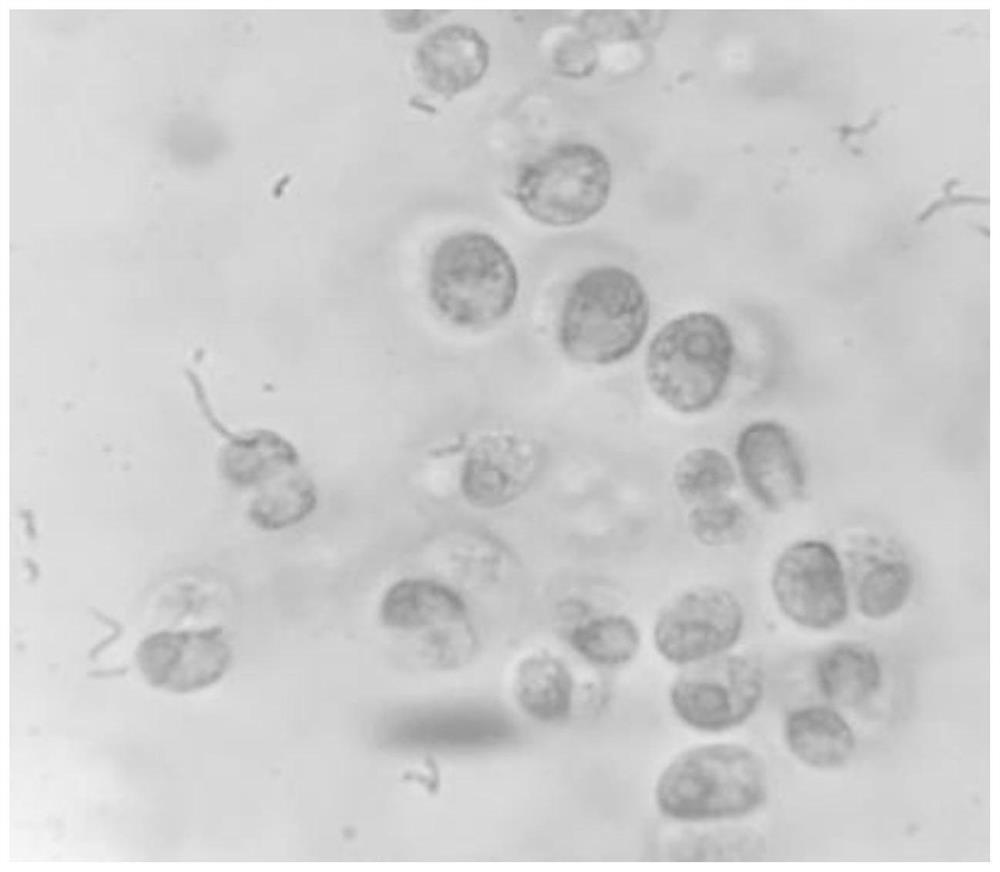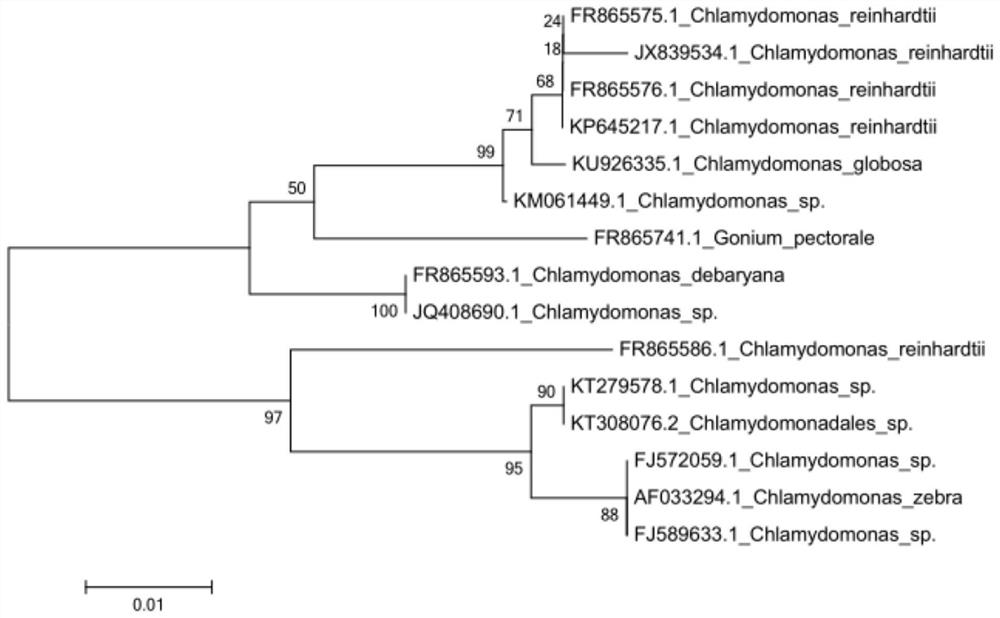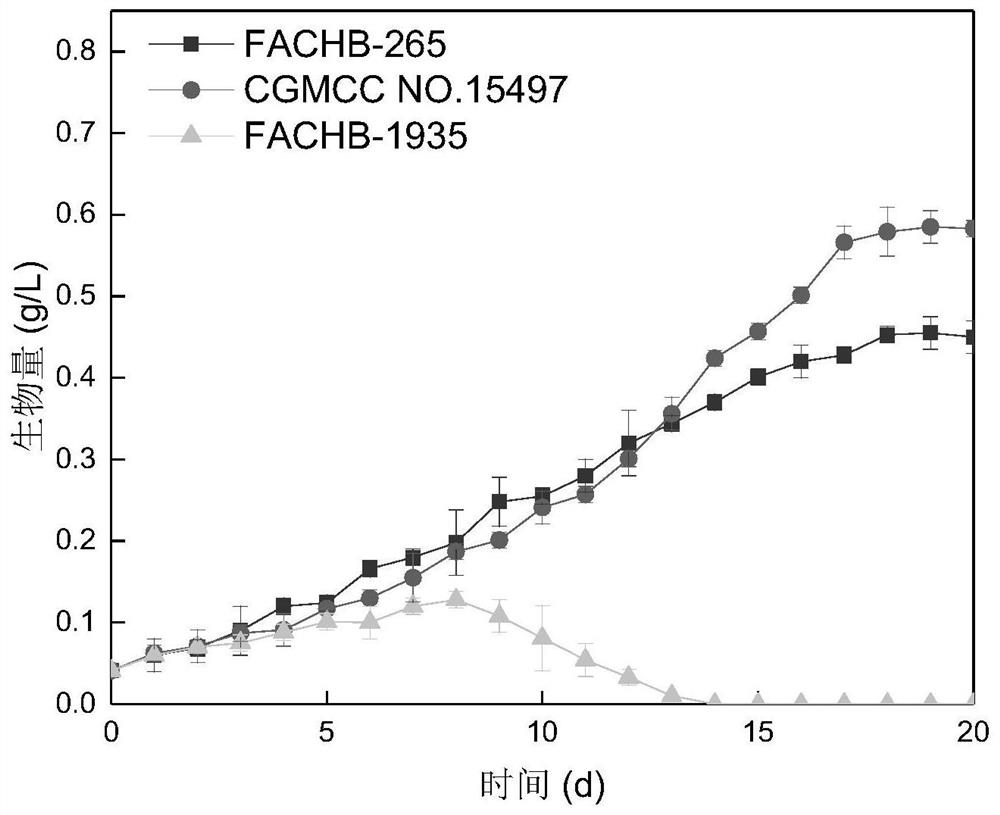A Chlamydomonas strain and its application in biogas slurry purification
A technology of Chlamydomonas and algae strains, applied in the field of microorganisms, can solve the problems of secondary pollution, eutrophication, and high cost
- Summary
- Abstract
- Description
- Claims
- Application Information
AI Technical Summary
Problems solved by technology
Method used
Image
Examples
Embodiment 1
[0035] Embodiment 1: Separation, purification and preservation of algal strains
[0036] (1) Sample collection
[0037] The algal strains involved in the present invention are obtained by sampling and separating from the soil polluted by pig manure anaerobic digestion biogas slurry in the biogas service station of Xibaidian Village, Daxingzhuang Town, Pinggu District, Beijing. Soil samples were collected from the soil surface at selected locations, placed in sealed bags, and stored in a 4°C refrigerator for later use.
[0038] (2) Separation, purification and cultivation of algae strains
[0039]Take about 0.5 g of soil sample in a 24-well tissue culture dish, add BG11 liquid medium (the specific composition of BG11 medium is shown in Table 1) and place it in a light incubator with adjustable environmental parameters for algae enrichment culture. After culturing for 3-4 days, the color of the medium can be clearly seen to change from colorless to light green. Then on the BG...
Embodiment 2
[0050] Example 2 Exploration of Optimum Culture Conditions for Algae Strains
[0051] After obtaining the above-mentioned microalgae species with sufficient biomass, in order to explore its suitable culture conditions, the present invention carried out a single factor test on four common technical parameters of microalgae culture, light intensity, photoperiod, temperature and inoculum size—positive A series of optimization studies such as cross experiment—response surface experiment, etc. The parameters set are light intensity: 100, 150, 200, 250, 300 (μmol / ㎡ / s), photoperiod (light / dark ratio): 12 / 12, 14 / 10, 16 / 8, 18 / 6; temperature: 15°C, 20°C, 25°C, 30°C; pure culture inoculation amount (algae medium culture): 0.015g / L, 0.020g / L, 0.025g / L, 0.030g / L, found that the optimum is 0.025g / L. The same test method, set the inoculation amount of biogas slurry culture (algae species are used for the cultivation of pig manure biogas slurry): 0.020g / L, 0.030g / L, 0.040g / L, 0.050g / L, the...
Embodiment 3
[0054] In Example 3 and Comparative Example, 6 mL of culture fluid was sampled every day to measure biomass and water quality. All experimental groups were set up with three repetitions.
[0055] Example 3: Application of Chlamydomonas strain CGMCC NO.15497 to purify swine manure biogas slurry
[0056] (1) Test material
[0057] The pig manure biogas slurry used in this experiment was taken from the biogas slurry storage tank of the biogas service station in Xibaidian Village, Daxingzhuang Town, Pinggu District, Beijing, because the raw biogas slurry in the storage tank contained a relatively high concentration of ammonia nitrogen (>900mg / L) and a large amount of suspended solids (700-800 mg / L), the raw biogas slurry was pretreated by flocculation-air flotation, so that the concentration of ammonia nitrogen and suspended solids was reduced to the level that microalgae could tolerate. The water quality of the pretreated pig manure biogas slurry is shown in Table 2.
[0058] ...
PUM
| Property | Measurement | Unit |
|---|---|---|
| chemical oxygen demand (mass) | aaaaa | aaaaa |
Abstract
Description
Claims
Application Information
 Login to View More
Login to View More - R&D Engineer
- R&D Manager
- IP Professional
- Industry Leading Data Capabilities
- Powerful AI technology
- Patent DNA Extraction
Browse by: Latest US Patents, China's latest patents, Technical Efficacy Thesaurus, Application Domain, Technology Topic, Popular Technical Reports.
© 2024 PatSnap. All rights reserved.Legal|Privacy policy|Modern Slavery Act Transparency Statement|Sitemap|About US| Contact US: help@patsnap.com










